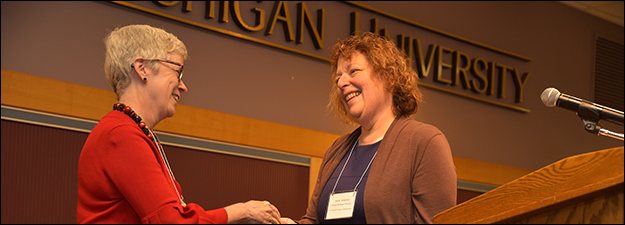The Stones Cry Out: Modes of Citation in Medieval Architecture
Sponsoring Organization(s)
Special Session
Organizer Name
Lindsay S. Cook, Zachary Stewart
Organizer Affiliation
Columbia Univ., Fordham Univ.
Presider Name
Lindsay S. Cook, Zachary Stewart
Paper Title 1
A "Bible in Stone"? The Sculptures of the West Facade of Amiens and Contemporary Modes of Citation
Presenter 1 Name
Jennifer M. Feltman
Presenter 1 Affiliation
Univ. of Alabama
Paper Title 2
Nicolaus Cusanus's Sankt Nikolaus Hospital (1458) in Bernkastel-Kues, Germany: Appropriations of/Deviations from the Mediterranean Contemporary Canons
Presenter 2 Name
Il Kim
Presenter 2 Affiliation
Auburn Univ.
Start Date
12-5-2017 10:00 AM
Session Location
Bernhard 158
Description
Over the past several decades, a growing number of scholars have examined, in explicit terms, the role of citation in architectural production during the Middle Ages. On the one hand, their work has been of great benefit to the field, demonstrating that citation is a productive paradigm for understanding the ways in which isomorphic relationships enable spatial environments to create, support, or subvert social orders. On the other hand, their work has also raised troubling questions about the capacity of buildings to convey meaning, assuming as it does that architecture, like language, functions as a coherent semiotic system. Vitruvius laid the groundwork for the application of this logocentric analogy to classical architecture, but does it necessarily obtain within all modes of architectural production, particularly those considered un- or anti-classical? What are the advantages or disadvantages of choosing citation—versus imitation, replication, appropriation, influence, or habit—as a discursive frame for studying the recurrence of formal elements within architectural ensembles? How does such a visually oriented method address issues of production, perception, technology, function, and value? How might it alter current accounts of the design, construction, and meaning of buildings modeled after famous precedents?
Lindsay Cook
The Stones Cry Out: Modes of Citation in Medieval Architecture
Bernhard 158
Over the past several decades, a growing number of scholars have examined, in explicit terms, the role of citation in architectural production during the Middle Ages. On the one hand, their work has been of great benefit to the field, demonstrating that citation is a productive paradigm for understanding the ways in which isomorphic relationships enable spatial environments to create, support, or subvert social orders. On the other hand, their work has also raised troubling questions about the capacity of buildings to convey meaning, assuming as it does that architecture, like language, functions as a coherent semiotic system. Vitruvius laid the groundwork for the application of this logocentric analogy to classical architecture, but does it necessarily obtain within all modes of architectural production, particularly those considered un- or anti-classical? What are the advantages or disadvantages of choosing citation—versus imitation, replication, appropriation, influence, or habit—as a discursive frame for studying the recurrence of formal elements within architectural ensembles? How does such a visually oriented method address issues of production, perception, technology, function, and value? How might it alter current accounts of the design, construction, and meaning of buildings modeled after famous precedents?
Lindsay Cook

